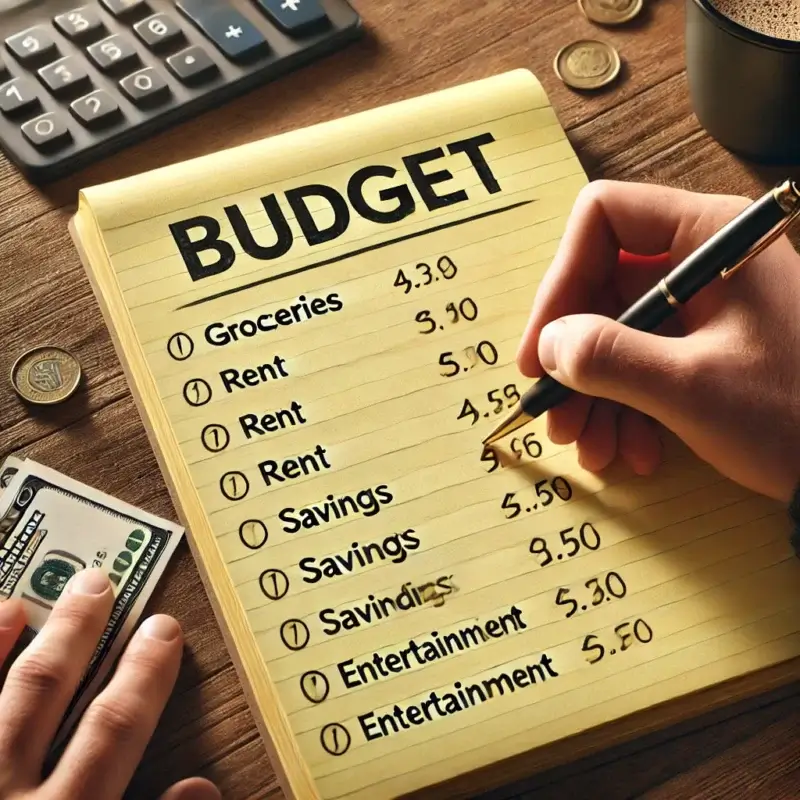How to Build a Budget That Works and Save More Each Month
Understanding Your Financial Situation
Before embarking on the journey of creating a budget, it is imperative to assess your current financial situation comprehensively. This assessment serves as a foundation upon which an effective budget can be built. Begin by gathering all pertinent financial information, including your income, expenses, debts, and savings. Understanding these elements is crucial for developing a clear picture of your financial health.
Start with your income, which includes all sources, such as your salary, bonuses, and any additional revenue streams like freelance work or rental income. Documenting your total income will provide insight into the financial resources available to you each month. Next, meticulously track your expenses. It may be beneficial to categorize these expenses into fixed costs, such as rent or mortgage payments, utilities, and insurance, alongside variable costs, like groceries, entertainment, and dining out. This method of categorization allows for a more organized approach in analyzing where your money is going on a monthly basis.
Another critical component of your financial assessment involves identifying any outstanding debts, including credit card balances, personal loans, and student loans. Understanding your total debt load is essential as it will influence how much you can allocate towards savings and discretionary spending. Finally, take stock of your savings, including emergency funds and any retirement accounts. Knowing your current savings status will help you gauge how much you can afford to set aside each month. As you compile this information, you will begin to recognize your spending habits, pinpoint areas for improvement, and establish a baseline for building a realistic and effective budget. This foundational understanding of your financial situation is a vital first step in the budgeting process.
Setting Financial Goals
Establishing clear financial goals is paramount when crafting a budget that works effectively. Financial goals serve as the foundation of any budgeting process, guiding individuals on how they allocate their resources. It is crucial to differentiate between short-term and long-term goals. Short-term goals typically consist of objectives that can be achieved within a year, such as paying off credit card debt or saving for a vacation. Conversely, long-term goals might include saving for retirement or a child’s education, which require sustained effort and planning over several years.
To create actionable financial goals, the S.M.A.R.T. criteria should be considered. S.M.A.R.T. stands for Specific, Measurable, Achievable, Relevant, and Time-bound. For instance, instead of stating, “I want to save money,” a specific goal would be, “I aim to save $5,000 for a family vacation in the next 12 months.” This approach enables you to measure your progress and adjust your savings strategies whenever necessary. Ensuring that goals are achievable is vital; setting an unrealistic target can lead to frustration and potentially derail your budgeting efforts.
Additionally, relevance is essential in goal setting. It is important to prioritize goals that align with your personal values and financial situation. For example, if homeownership is a priority, focusing on saving for a down payment should take precedence over other less critical financial aspirations. By identifying and prioritizing financial goals, you can create a roadmap that not only enhances your budgeting experience but also keeps you motivated as you work towards achieving each milestone.
Ultimately, establishing clear and prioritized financial goals can empower individuals to stay committed to their saving strategies, fostering a disciplined approach to budgeting that adapts to changing life circumstances.
Creating Your Budget Plan
Establishing an effective budget plan is essential for achieving financial stability and fostering savings. The process begins with assessing your income and expenses, allowing you to understand your financial landscape thoroughly. Once you have this information, different budgeting methods can be applied to customize your approach to match your financial preferences and goals.
One popular method is the envelope system, which involves allocating specific amounts of cash for various spending categories such as groceries, entertainment, and utilities. By using physical envelopes, you can visually monitor your spending and avoid exceeding your budget limits. This method is particularly beneficial for individuals who struggle with credit card management or find it difficult to stick to a monthly budget.
Another effective technique is zero-based budgeting, where every dollar of your income is assigned a purpose, ensuring that your income minus expenses equals zero. This method encourages a deeper awareness of spending habits, promoting strategic financial decisions. By anticipating expenses and saving for future needs, you can also account for irregular expenses that may arise throughout the year.
The 50/30/20 rule is another budgeting strategy that allocates 50% of your income to necessities, 30% to discretionary spending, and 20% to savings or debt repayment. This straightforward approach helps maintain a balanced lifestyle while promoting savings. Whichever method you choose, it is crucial to remain flexible and ready to adapt your budget plan as circumstances change, whether through an unexpected expense or an increase in income.
In maintaining financial discipline, regularly reviewing and adjusting your budget is vital. Doing so will not only help you stay on track but also empower you to make informed financial decisions that contribute to your long-term goals.
Tracking Progress and Making Adjustments
Monitoring and reviewing one’s budget is a crucial aspect of managing personal finances effectively. An effective budget is not static; it should evolve as circumstances change and financial goals are met. Regular evaluation allows individuals to identify spending patterns and savings progress, thereby helping them to remain aligned with their financial objectives.
To facilitate this process, various tracking methods, tools, and applications can be employed. Budgeting apps such as Mint, YNAB (You Need A Budget), and EveryDollar offer features that enable users to sync their bank accounts and categorize transactions automatically. These apps provide visual representations of spending habits, allowing for an immediate understanding of where money is going each month. Additionally, using spreadsheets can also be effective, particularly for individuals who prefer a more hands-on approach. Programs like Google Sheets or Microsoft Excel can help users customize their budgeting format according to their unique needs.
When evaluating spending habits, consider focusing on areas where expenditures exceed expectations or needs. Are there subscriptions that are rarely used or lifestyle choices that may be causing financial strain? By analyzing these habits, individuals can discover opportunities to reduce unnecessary spending, ultimately freeing up more funds for savings. Furthermore, it is important to set realistic spending limits in each category and remain flexible to make necessary adjustments. If certain categories are frequently overspent, consider reducing allocations elsewhere to maintain overall budget integrity.
Along with evaluating spending, periodically reassessing savings goals is vital. Setting up a timeline for short-term and long-term savings can help maintain focus. As income and expenses fluctuate, updating these goals to reflect any changes is essential in maximizing savings potential. In conclusion, effective tracking and regular adjustments to budgeting strategies can lead to meaningful improvements in financial health and enable individuals to save more each month.

